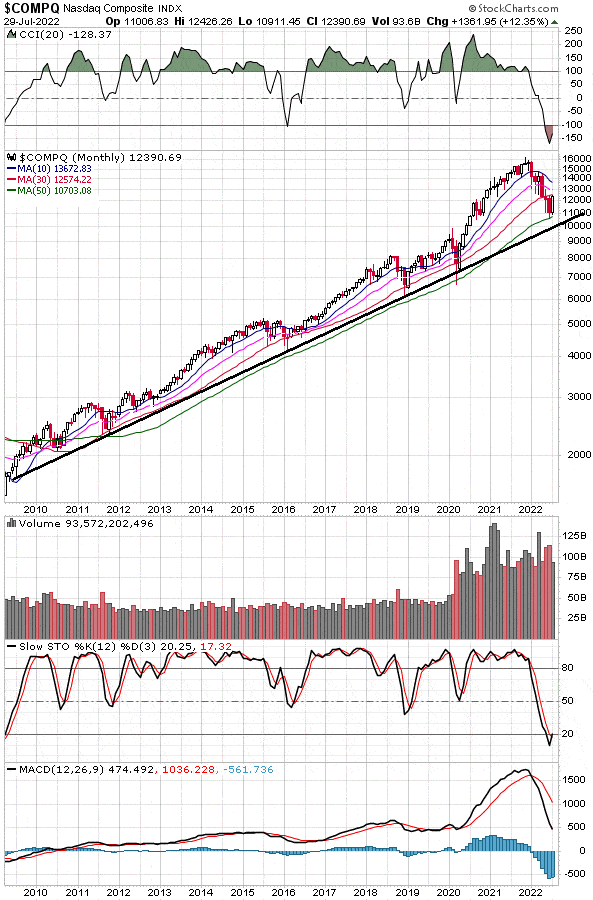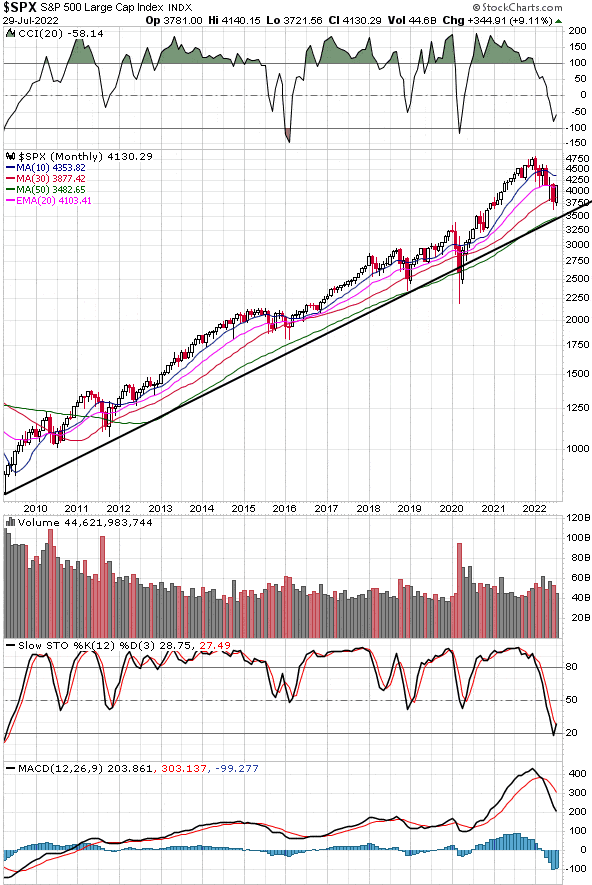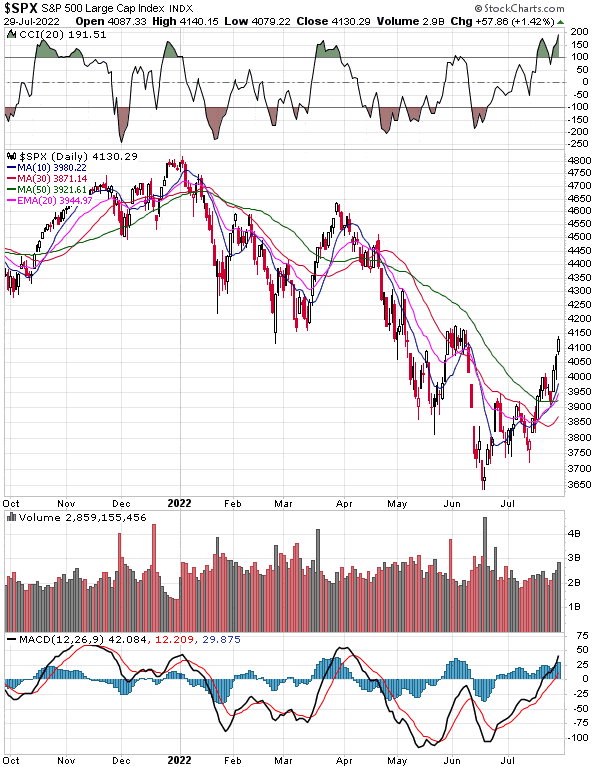Stock Market Bottom Indicators
In the last blog post we talked about how we traded Zoom Video for a profit just before the stock started a long, painful downtrend. As a swing trader, we were able to avoid the crushing 86% drop in the stock from the highs.
Fast forward more than a year and a half and we find Zoom Video and the overall market showing some signs of bottoming after a long slide. Zoom is still about 80% below where we got out.
Even the large cap Nasdaq index came down 34% from peak to trough. This is larger than the drawdown that occurred in early 2020 as the pandemic was just starting.
Cyclical or Secular Bear Market
Now here is the question traders are asking themselves or should be asking…
Is this the end of a cyclical bear market or the start of a secular (long-term) bear market?
A cyclical bear market is really just an oversized correction within a longer-term bull market. If this is the case, we can expect a much better trading environment for the bulls in the months ahead after a likely market bottom. A pretty exciting one, in fact. We are already seeing signs of this in July from stocks that could soar in the months ahead.
If this is the start of a secular bear, however, we have likely seen just the first in a series of 3 to 5 large corrections. Each large correction taking the overall market indices to new lows.
The difference between a cyclical bear or large correction and a long-term bear market really shows itself in the third and fourth leg lower. These tend to occur towards the end of a bear market and the corrections are usually much larger than the first 2 corrections. More about that later.
Cyclical Bear Argument
There is a good argument, however, for this being the end of a cyclical bear market and the continuation of a longer-term bull run.
Valuations based on earnings have already come down to more reasonable levels. The month-to-month trend of core inflation has already turned over with inflation break-evens forecasting less than 3% inflation in the near future. That being said, these markets were obviously wrong about inflation last year when they were forecasting around 2% inflation this year.
Bear Market Signals
Every bullish confirmation signal this year has been met with high inflation and/or increased rate hike expectations from the Fed soon after. The timing from the Fed was impeccable it seems to take the bulls to the cleaners. This caused a sharp resurgence in selling and new 52-week lows for the major indices.
This occurred on more than one occasion this year causing many bulls to throw in the towel and mention that the Fed has lost credibility. Many learned the hard way that over stimulation of the economy, accelerating inflation with new inflationary events and a Fed now running to catch up is really, really, really bad for both stocks and bonds.
This also can lead the Fed to gradually becoming more hawkish instead of moving the “dot plots” too high initially which could have led to a sudden market crash last November.
Yea, its been the worst start of a new year in five decades. The worst for bonds in more than 200 years.
But now we have seen a stronger bullish market signal in July.
This time around a bullish confirmation signal was met with inflation numbers only slightly higher than expected with a sharp drop in commodity prices in July which will likely mean lower inflation numbers released in August. Also, the Fed did not raise interest rate expectations significantly within days after the bullish market signal.
So far, we are seeing earnings come in better than feared in Q2 with total forecasted 2022 S&P 500 earnings holding up well.
We may have already passed peak inflation and “peak Fed” some experts tell us. Good news for the bulls if initial jobless claims hold up reasonably well in the months ahead.
Technical Bull Market Signals
From a technical standpoint, the focus in our trading, the major market indices are actually still trading above long-term trendlines despite the carnage in the first half of the year. Lets take a look at the Nasdaq over the past 13 years since the financial crisis on a monthly chart.
Chart courtesy of StockCharts.com
We threw out the pandemic panic lows made in March of 2020 as volatility was near record highs. Otherwise, the lows line up very nicely and define the powerful upward sloping channel the Nasdaq has been in since the 2009 lows. This also corresponds with the pace of innovation and earnings growth and climbing the “wall of worry” since the financial crisis with expanding margins and multiples.
We can also see how the 50 month moving average is holding up as support and the strong move last month off that level of support. It actually looks like a good entry point for a longer-term trade. Again, as long as this is not the start of a secular bear.
Below is the long-term chart of the S&P 500:
Chart courtesy of StockCharts.com
Again, its looking like a test of a long-term trendline and a rebound starting over the past few weeks. On a monthly timeframe, momentum continues to increase during rallies.
On a daily chart we can see the recent bullish divergence after a 24% drawdown from the highs and the strong move we are seeing after the S&P 500 broke back above the 3950 area and the acceleration to the upside over the past few days.
Chart courtesy of StockCharts.com
We can also see the stronger volume coming in as the indices race to likely retrace at least 50% to 61.8% of the drawdown from the highs with likely choppiness along the way. The 50% retracement is a popular target for wall street experts currently. This is the 4200 to 4250 area for the S&P 500. A 61.8% retracement, another common fibonacci retracement level, would bring the S&P to just above the 200 day moving average – a little shy of 4400.
One thing we do not like to see is a downward sloping 200 day moving average. Both the Nasdaq and S&P 500 have downward sloping moving averages and will have that characteristic in the weeks ahead.
Despite that, we are starting to see more strong breakouts out of good technical patterns from likely leaders in a new sustained uptrend.
Stocks featured to our customers in July like RRC, ENPH and TSLA just made powerful initial moves right after reaching the technical entry trigger. RRC and ENPH soared around 20% from our entry trigger in just a few days.
Early in a new uptrend is not a time to get too aggressive but these initial buys are working out and giving the bulls hope that this rebound is for real.
Getting too aggressive at this point is not too wise, though, as this could be just a bear market rally in a long-term bear market. A small window of opportunity for a few more weeks to score some big trades before the next leg lower.
In the next blog post we discuss what will likely transpire if this is the start of a secular bear market and compare it to the initial stages of prior bear markets in modern US market history.
A longer-term bear market will likely offer generational buying opportunities after the third and fourth large leg lower. So this will be a great study for what may be ahead of us.
Explosive Stocks we are Watching this Week








